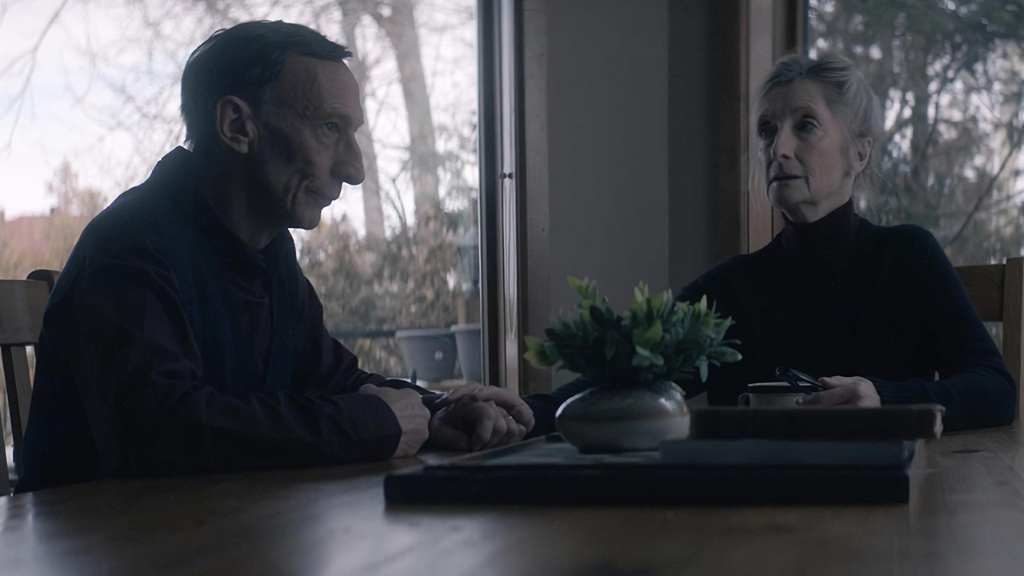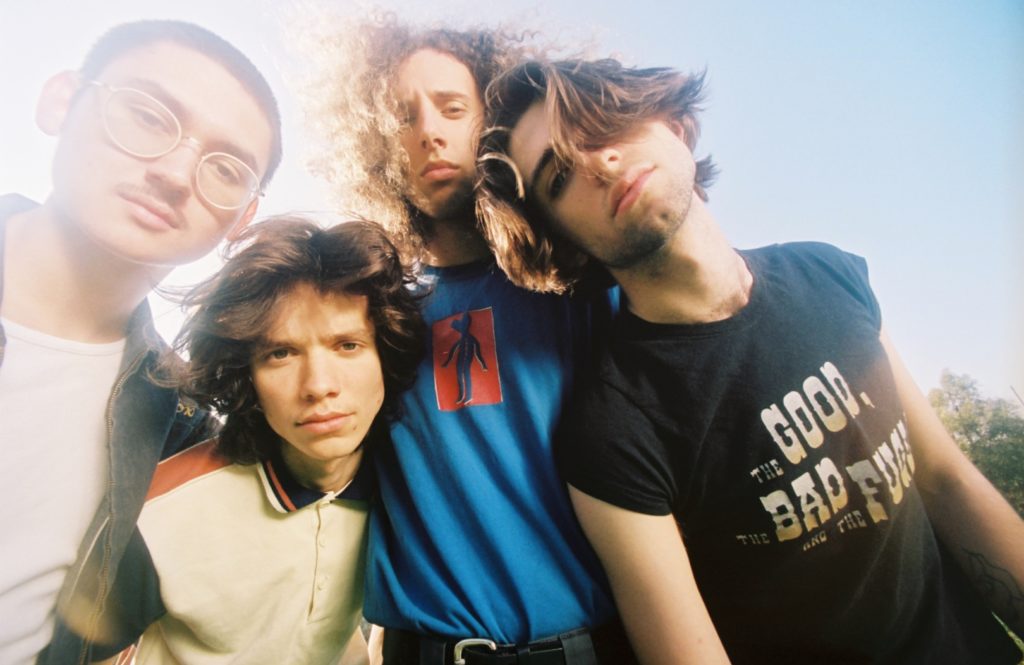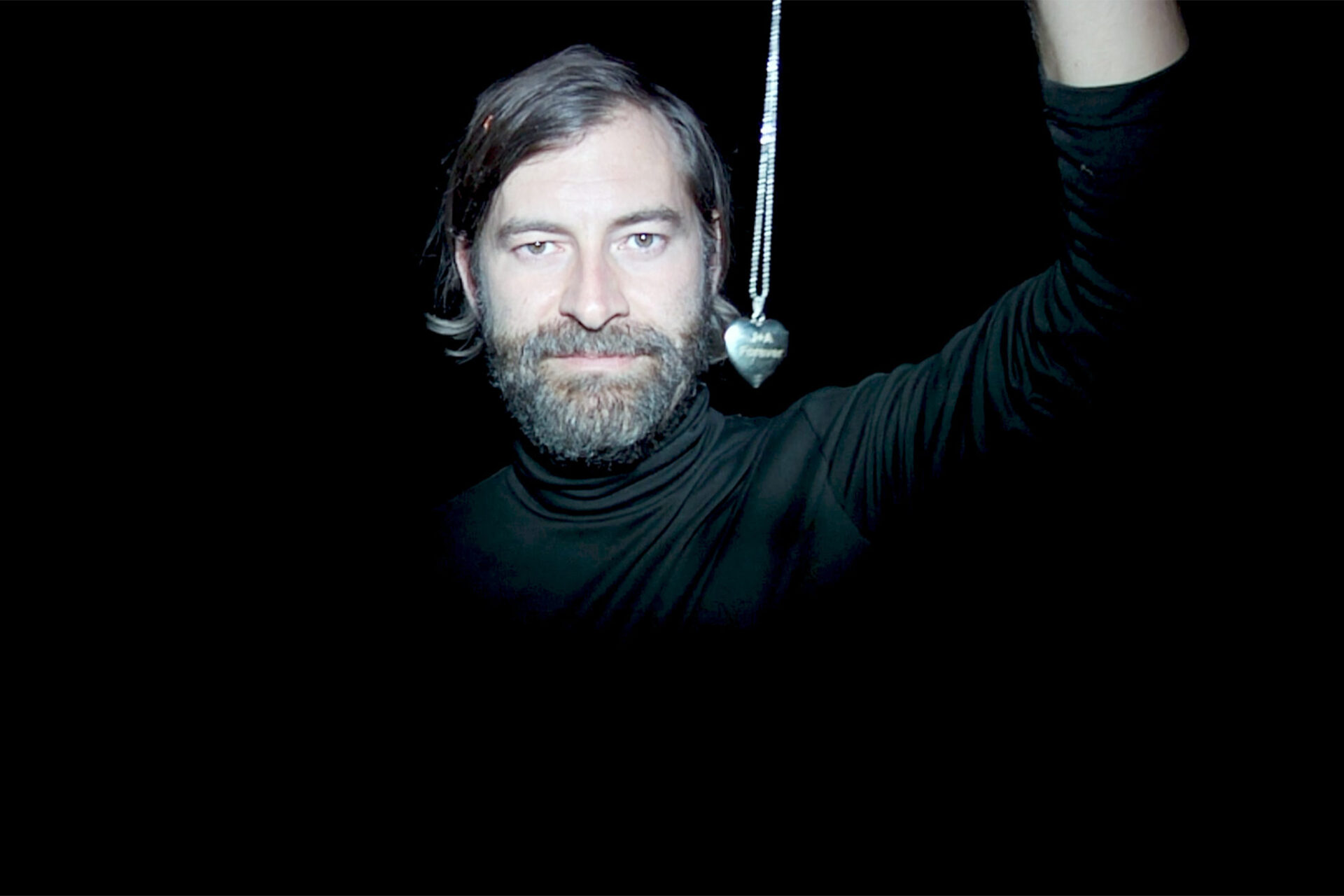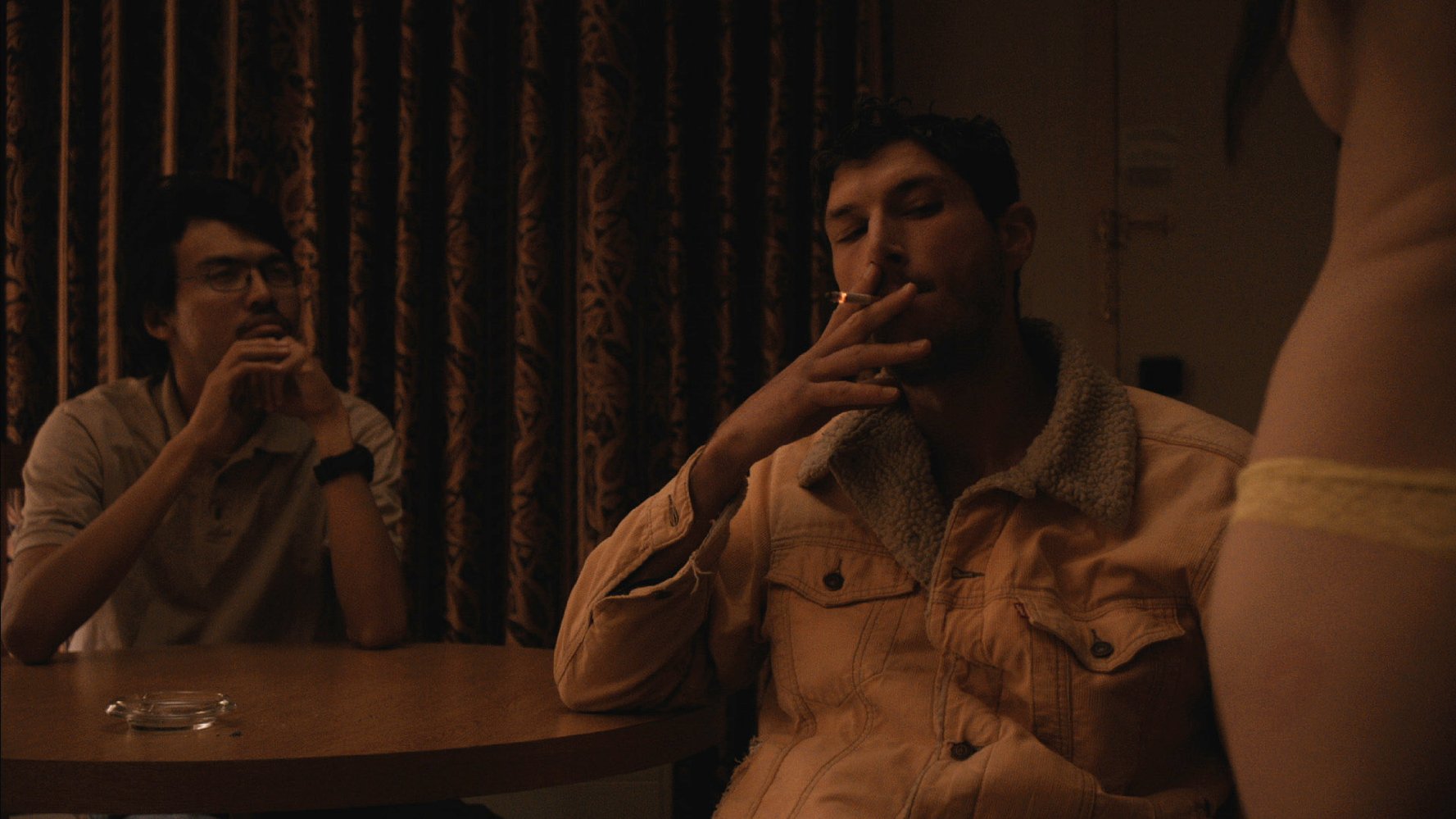Exorcism movies have been a part of the horror movie family tree for years, and they’ve varied in ways that the theme has been introduced. Some examples would be the 1973’s classic, The Exorcist, the part courtroom drama with 2005’s The Exorcism of Emily Rose, and the found-footage style of 2010’s The Last Exorcism. There’s something about the comfort that religions bring us against the volatility of evil that will always send a shiver up our collective spines.
What about the concept of a reverse exorcism? How far would one go in order to bring back a loved one? The premise is intriguing as it confronts our desperation to undo the chains of death by any means, but are also naïve to deal with the consequences of those choices. Anything For Jackson, which premieres on Shudder tomorrow, is a film by Director Justin G. Dyck and writer Keith Cooper that deals with this concept. Anything For Jackson finds an elderly couple named Audrey and Henry Walsh (Sheila McCarthy, Julian Richings) who are grieving the loss of their grandson. From there, they turn to more macabre means to bring him back. The movie asks how far people will go to bring a loved one back, and what are they willing to do to make that happen? The film adds instances of humor, drama, and classic horror to tell its story.
I spoke to Dyck on how he approached making this film and his journey leading up to Anything For Jackson, amongst other things.
The concept of exorcisms and evil spirits has been prevalent throughout the horror genre for as long as I can remember. It’s to the point where we’ve seen it from every which angle. However, the concept of a reverse exorcism is fresh and explored within Anything For Jackson. How did you come about that concept?
Justin: I think the question is the answer. We were a big fan of the genre, myself and the writer, Keith Cooper. We put this thing together and saw it through from the beginning. Starting from that point, we looked into what makes exorcisms different. Is it in a farmhouse or a modern house, right? How do you put a fresh take on it? So we just said, “well, what’s the opposite of an exorcism?” From that, this idea was born. So, it was really just that simple. We both wanted to put a spin on the genre we loved, so we just took it from the opposite angle and this came out.
Audrey and Henry are elderly, and they are also practicing Satanists. Normally, this type of character structure would call for a younger couple. Anything For Jackson turns a lot of tropes on their heads. They are definitely naïve in how they are going about bringing their grandson. It makes for some funny moments, but also those that invest in how grief can manifest.
Yeah. Well, I think the original concept started with the question, “Who would feel the need to do this?” It will have to be parents, of course. Then, we asked how do we make those characters more interesting. The more we dove in, the more we thought to go to grandparents. From there, we have a generational thing. We can play with privilege and the baby boomers versus the millennials, and where a lot of that tension comes from in the world today.
So, we just wanted to play with that. With the original concept, we wanted to just push the envelope and come up with another spin. So if you expect it to be parents, how do you take that one step further? There was just so much there with grandparents that we could explore. So that’s, that’s how Henry and Audrey came to be.
The movie definitely emphasizes that Audrey and Henry are nefarious for both kidnapping someone and trying to do this ritual. It also shows a side of those characters that you can almost sympathize with. Was it a conscious decision to bring about that tug-o-war within the viewer?
Grief is a very, is a trait that anyone can relate to and it’s easy to show that, “I would do anything for this person.” There are people who would say, “I would die for my child, I would die for my grandkid.” But, what’s the next step of that? What would you do beyond that? Would you turn and inflict something onto somebody else? Then, what is the value of life, and whose life is more valuable? Is it the person you love, or someone you don’t know?
So playing with that, I think we all root for Becker. I hope we do because she did nothing to deserve this, but it’s more complicated. Life is more complicated than that. So, Henry and Audrey, you don’t want them to do that. But it’s hard not to think, “hmm, would I?” That was the goal and make people sympathize with a monster. Hopefully, we achieve that throughout at least part of the movie.
Taking about Becker’s character, she’s a single mom that finds herself in this terrible situation. Surrounded by ghosts, demons, and people that just look at her as a conduit, but the movie never makes her weak. The concept of motherhood grows as she is looking for ways out of this predicament and throughout the film. How important was it was to shape her character in this way?
Well, we didn’t need a damsel in distress. I think we needed strength and all of our characters. Keith and I are both parents, so we can sympathize a bit with Becker, I think we didn’t want it to be just a typical perfect version of a mother. It’s a normal person who’s flawed. Maybe at the beginning, she didn’t know if she wanted this, but then throughout the pregnancy, she became a mother. That was something that I’ve seen with my wife, and it was a good thing to do with that character. Becker isn’t perfect, but she’s a mother and I think that all mothers share a certain quality – that’s the desire to protect their child.
With the pacing of the film, you make a good conscious decision to break up the ominous nature with natural humor. For example, Audrey is going through Becker’s phones and seeing the messages. Both Audrey and Henry trying to go through the ritual and reading it like a recipe. When you get to the second act, the atmosphere of the home changes. The color tones go a little colder and the movie takes a darker turn.
We hired great cinematographers. The secret to that is that we got Sasha Moric, who’s just amazing. It was an absolute pleasure working with Sasha. This is a low budget film, so we convinced him to come in through some mutual friends, and he really connected with the script. That went a long way to our cinematography. I started in the camera department. That’s sort of how I broke into film, so I’ve always had a love for that.
With the pacing and everything, Keith Cooper’s writing is incredible. He and I have worked together for a long time. If you looked me up, you’ll notice that we make a lot of family-oriented movies. So we’ve sort of mastered the three-act structure and your typical repetitive romantic comedies sort of idea. Once you have a good handle on that pacing, it’s really fun to break it and go opposed to what you know. In terms of the comedy, we thought it was funny when we were making it; I didn’t know that everyone would connect with it as being called a dark comedy.
The purpose of it was to make it real. If you met a Satanist in a small town, would they have a dark layer in a cave and all this support and money? No, probably not. They would be a small group of people who had to meet at the local library. To me, that was really funny. I thought, “well, if people find it funny, they’ll laugh if they don’t, it just has realism in it.” Sheila McCarthy is just naturally hilarious. So, give her a bit to work with, you’ll she can entertain, that’s for sure.
With a film having a finite amount of characters, the characters have to stand out in a way to keep the viewer engaged. Everyone from Sheila McCarthy, Julian Richings, Konstantina Mantelos, and Yannick Bisson, to name a few all put on great performances. How did you go about getting the cast together? It seemed like a really fun time making this film.
Yeah, it was so much fun. We found Sheila first. We sent her the script before we had any money or anything. She liked it, and we’re so grateful that she did because she just you know we didn’t have any contracts. She said, “if we can fit into this schedule. I would love to do this with you guys.” So now we had a great script and Sheila McCarthy attached. When we finally found the financing, we went up to Julian. We actually wrote the script for Julian on the off chance we could get him. We sent him the script, and he always wanted to work with Sheila. So, that’s how he signed on board.
The wonderful producers at Vortex had worked with Yannick a number of times. He loves playing off character from his many years of being successful in Murdoch Mysteries. What Yannick brought even surprised me. We had a brief phone call beforehand, but we really didn’t get to work too much on the character. He showed up on the day and in the first take, I just thought, “oh my gosh, that is Ray.” The character he played was so much more lovable than I expected. I thought, “I really like Ray, I don’t want anything bad to happen to him” as soon as he performed that first scene,
With Konstantina, when we found her, I didn’t understand why she wasn’t already a big star. That boggled my mind, and I felt really lucky that we got to get her in before Hollywood scooped her up. Josh Brutus is another one; this guy’s going to be a massive star one day. Then some supporting roles with Scott and Claire Cavalheiro. They are their friends I met in networking in the Christmas movie world. They are way too experienced to be working on a low budget film like this for one or two days. However, they came, helped out, and added so much value to our little low budget film.
How did it feel shifting gears from making Christmas films that are more light-hearted to a horror film like this? Did it feel like a breath of fresh air artistically?
Oh, it absolutely was. When trying to break in as a feature film director, we set out to make a horror movie. I had some ideas you could make for $100,000 – five kids in the woods sort of stuff. So, I met an executive producer, and she went out to find financing for this film. She came back said, “well, I found money, but we have to make a movie with a monkey playing soccer with a kid.” So I said, “okay, well, I don’t have feature yet. So I’ll make a monkey movie.”
When you have a movie like that, that doesn’t mean horror producers are any more likely to work with you. We made a Christmas movie, then a romantic movie. It turned into a great day job. You know, I get to work with actors and I learned a lot about directing through making those films. The goal was always to make a horror movie, so was a long time coming. It’s what I’ve always wanted to do.
It was absolutely a breath of fresh air and great to dive in, research, plan, and shot list out all of our scares. Like our trick or treat ghosts. I think was a really fun exercise in directing because we didn’t have much. We just had a kid in a bedsheet costume. That’s not going to be scary on its own, and we had to find a way to make that scary. That was a lot of fun challenging ourselves in those ways.
Are you thinking about dipping your toe back into the horror genre already?
I am! I’m very actively pursuing more horror projects. The Christmas movies are how I put food on the table right now. So, I’ve got to make a lot of those every year to keep up. I got the best day job in the world. I get to direct and get to work with actors and crews all the time. But, yes, Keith Cooper and I have several scripts and ideas ready to go. We’re taking some meetings now and are going to continue to look and find the best partner for the next step in the horror world.













